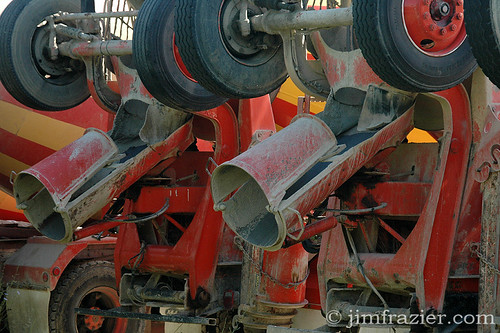
Every state has different rules for manufacturing. And I covered the major rules here. Today, I thought I'd review some of the more detailed taxing policies that you may deal with.
Where does the manufacturing process begin and where does it end? The first requirement to worry about, for most manufacturing exemptions, is that the item must be used in the manufacturing process. Usually, it starts at the first machine and ends at the last machine. The last machine is often packaging the product for the final consumer - putting beer in the can, for example. Sometimes the manufacturing process includes the transportation of raw materials to the first machine and transportation of the finished goods to the warehouse. And in a few situations, the process even includes the raw material and finished goods inventory as well as the shipping department. Not often, though.
Materials handling equipment, like lift trucks, pipes and conveyor systems, if used directly within the manufacturing process, will usually be exempt. But beware. There are a couple of states that specifically exclude this type of equipment from the manufacturing exemption. Also, some states require that the equipment be used exclusively in the process. The rest usually require that the equipment be used predominantly in the process. This is a challenge when you're running lift trucks all over the plant.
Concrete mixers are, in many states, considered manufacturing equipment. This is because, after the materials are loaded into the truck, there is still some processing being done in the drum as it's heading to the job site. Hence, it could be considered manufacturing equipment. But note that, in states where this exemption exists, it doesn't extend to the truck itself. The exemption only applies to the mixer.
Cleaning of manufacturing equipment is usually not considered directly used in manufacturing. However, if the cleaning is necessary for a food processor, then it's sometimes exempt.
Speaking of clean, clean rooms are sometimes exempt as well.
Sometimes, big manufacturing machines will require specialized concrete foundations. These may be exempt in some states, even though they are permanent (and really heavy) additions to real property.
Power generation equipment is frequently exempt if the power is being used by manufacturing equipment. Less often, transformers for electricity coming from mains is exempt.
Employee safety items, such as gloves, goggles, helmets, aprons, etc. are surprisingly not generally exempt, even if they are required by OSHA. One problem is that they are rarely directly used in the manufacturing process.
There are even more detailed manufacturing rules, but this should do for now. And I just realized that there were no jokes in this article. Sorry. Maybe next time.
The Sales Tax Guy
http://salestaxguy.blogspot.com
See the disclaimer - this is for education only. Research these issues thoroughly before making decisions. Remember: there are details we haven't discussed, and every state is different. Here's more information
Get these articles in your inbox - subscribe at http://salestaxguy.blogspot.com
Don't forget our upcoming seminars and webinars.
http://www.salestax-usetax.com/
Picture note: the image above is hosted on Flickr. If you'd like to see more, click on the photo.
